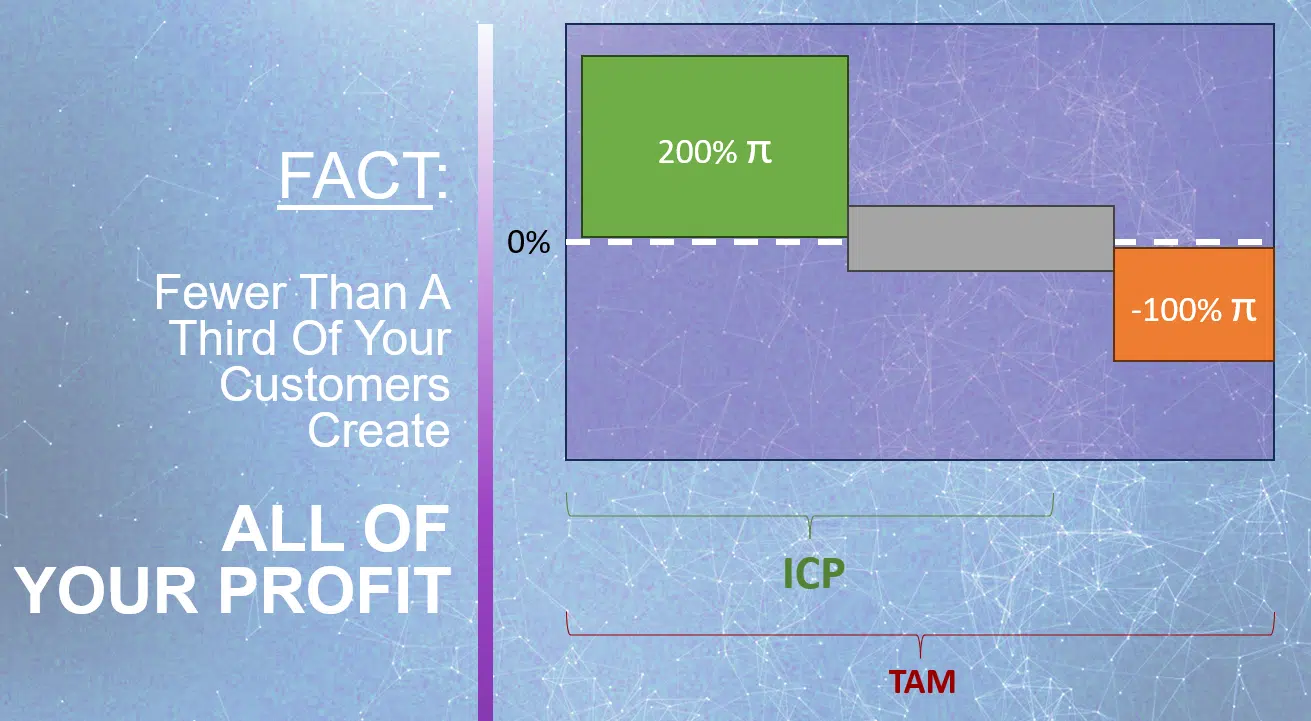How to make your ‘ideal customer profile’ more ideal
Make the most out of your B2B marketing efforts by understanding your customer base and prioritizing high-value targets.
B2B marketing success hinges on more than just innovative strategies and cutting-edge technologies. At the heart of top-performing B2B marketing programs lies a solid answer to the fundamental question: Do you truly know your best customers and where to find more of them?
Understanding and leveraging customer profitability
Every company has a finite number of target customers who hear their value proposition better, need it faster, will pay more money for it and will stay longer. This is the most elemental concept of successful marketing. The B2B marketer’s job is to identify this elite group of targets, invest time and money disproportionately to attract them and optimize your relationships with them.
Since 2015, my team has conducted vendor-agnostic primary research into high-performance account-based sales and marketing strategies. We examine how marketers do the core functions of these strategies and what the high-performing programs do differently to isolate success patterns and share them with our clients.
We’ve uncovered that one of the primary determinants of revenue impact for these elite high-performers is the process for account selection — 63% use a data-driven rationale to identify targets.

Let’s unpack this idea of differential profitability of customers and the strategic implications for B2B marketers.
Customer portfolio analysis
A closer look often reveals surprising profitability differences among customers. About one-third of customers contribute all profit, while the middle 50% break even and the bottom 20-30% cost a considerable chunk of their profit, according to recent data. This last group consists of those prospects that need super deep price discounts during the sales cycle, are more challenging to onboard, complain and want refunds and suck the life out of your customer success and account teams.
I nerd out on this topic quite a bit and ran across a scholarly article a few months ago where the author identified that these profit-sucking customers make their way through cross-selling and upselling at about the same rate as their acquisition. Sigh!
The key takeaway? All customers are not created equal, and all revenue isn’t necessarily profitable. Without a proper analysis of customers and a robust understanding of an “ideal customer,” efforts to scale impact may drive the company into a brick wall.
Dig deeper: Humanizing B2B: The key to better customer experience
Making your ‘ideal customer profile’ more ideal
The top-performing third of customers, coupled with a segment of the middle group, closely aligns with the ideal customer profile (ICP). The implications are profound: by identifying and prioritizing high-value customers, B2B marketers can significantly enhance the success of the investments they make on behalf of their company.
These top-tier customers bring substantial profits and exhibit characteristics that streamline the marketing process — from closing faster and shorter onboarding times to reduced complaints and resource consumption.
Forget total addressable market (TAM). TAM is a list of companies that could justify paying you something. The difference between ICP and TAM is that TAM includes the profit-sucking targets you must avoid.

A roadmap to success
Even though customer portfolio analysis can significantly shape ideal customer targeting, many B2B marketers still overlook this crucial aspect in their efforts.
The problem often begins when marketing strategies favor innovative tactics and technology over gaining a deep understanding of the customer base.
Here’s an alternative approach to consider:
Customer identification
Begin by clearly identifying and categorizing your existing customer base. Look back at least three years if you can, specifying the number of products/solutions purchased, renewals, average contract value and other indications of success.
Remember to identify the personas within those accounts:
- Who made the purchase decision.
- How the decision was made.
- The influencers of the decision.
Differential profitability analysis
Identify the top-performing customers and understand their characteristics.
Define your ICP
Identify characteristics of the top-performing customers and sources of data where you can find additional targets that look like them. Your data should include firmographics and technographics of the top-performing customers and other data sources to find more companies like them.
Segment your ICP into cohorts
This is a key step that thought leaders haven’t identified. The characteristics of the companies may differ between cohorts, and you need to group companies and personas with similar traits.
This is critical from a targeting perspective, enabling you to create content and programs aligning with a general homogenous audience’s needs. It’s also essential from a measurement perspective, allowing you to isolate success and failure at a level where you can make strategic decisions and optimize your connection of audiences, needs and content.
Iterative refinement
Implement an iterative process of refinement. Continuously analyze customer data, update the ICP and adjust marketing strategies accordingly.
Dig deeper: 10 steps to target and connect with potential customers effectively
ICP is a static construct
It’s essential to understand the nature of an ideal customer profile and the companies represented within it. While you may add or remove accounts over time, the general principle is that this is a static construct.
Your relationship with a company is dynamic. Some don’t know who you are yet, others are on their way to becoming a customer, and then you have a group of customers. The ICP doesn’t change because of interactions or intent signals. This is critical for targeting and measurement.
Analyze your B2B customer portfolio for improved profitability
The path to B2B marketing success begins with a deep understanding of your best customers and how to attract more of them. By diving into customer portfolio analysis and acknowledging the differences in client profitability, B2B marketers can pave the way for targeted, truly impactful programs.
Opinions expressed in this article are those of the guest author and not necessarily MarTech. Staff authors are listed here.
Related stories